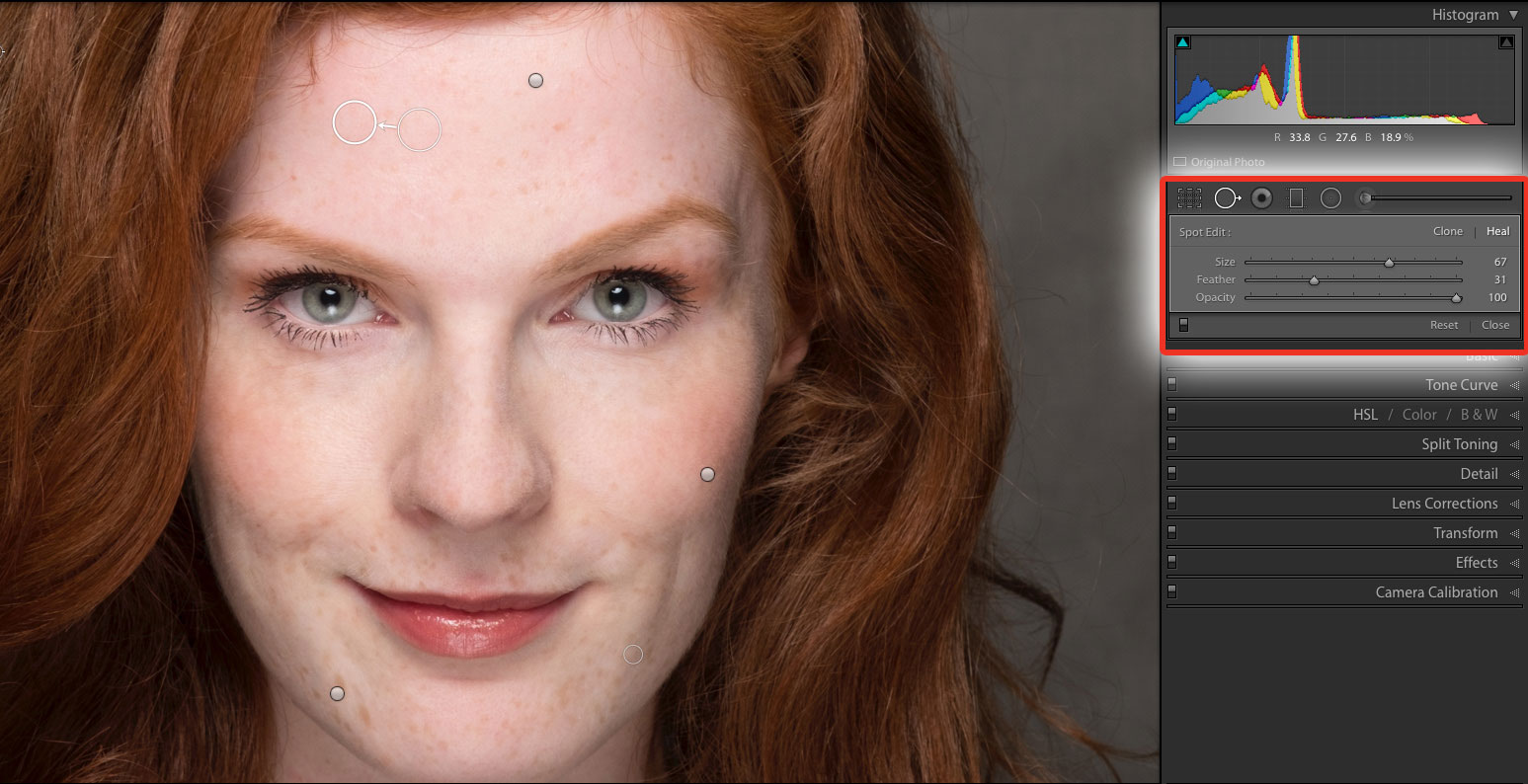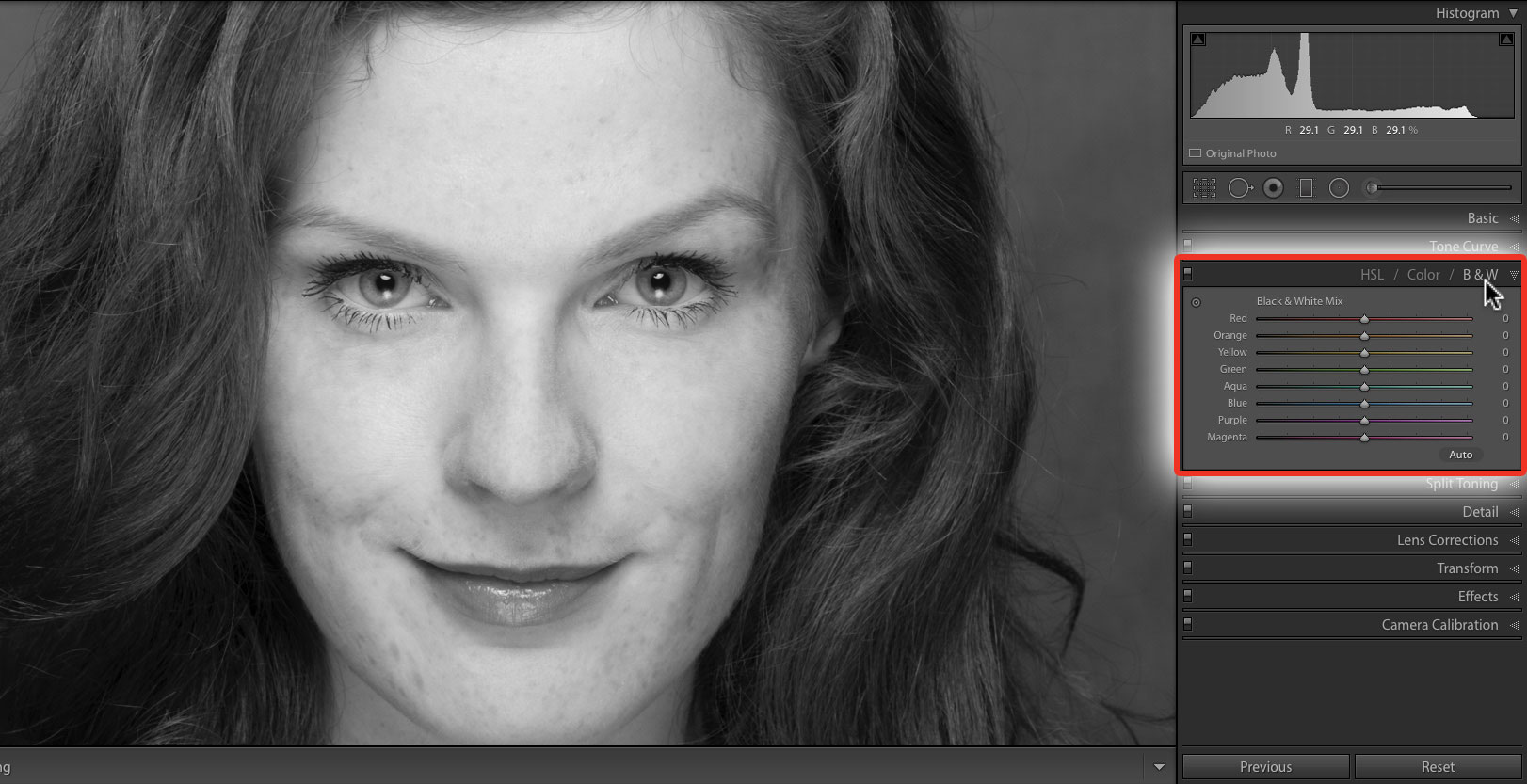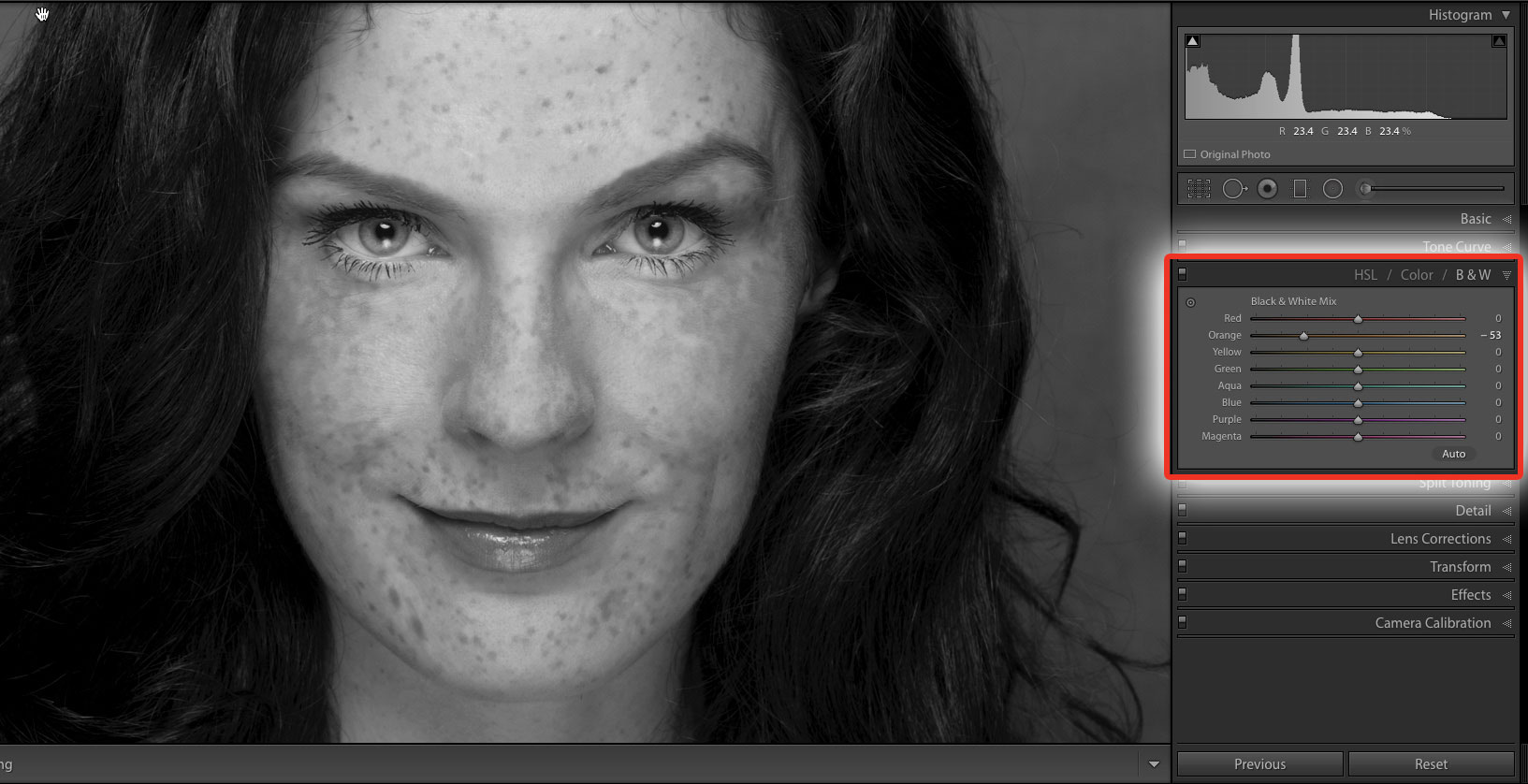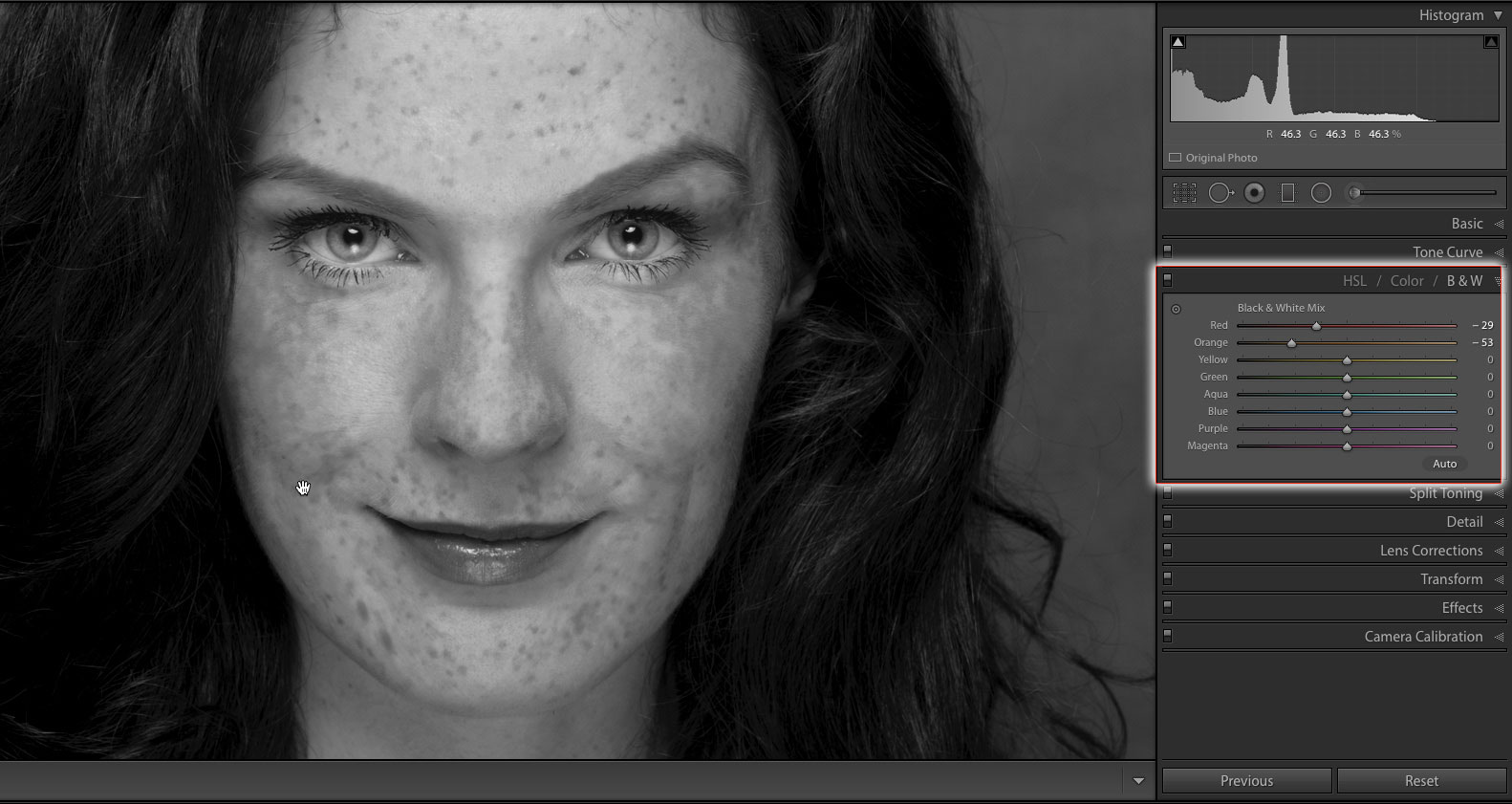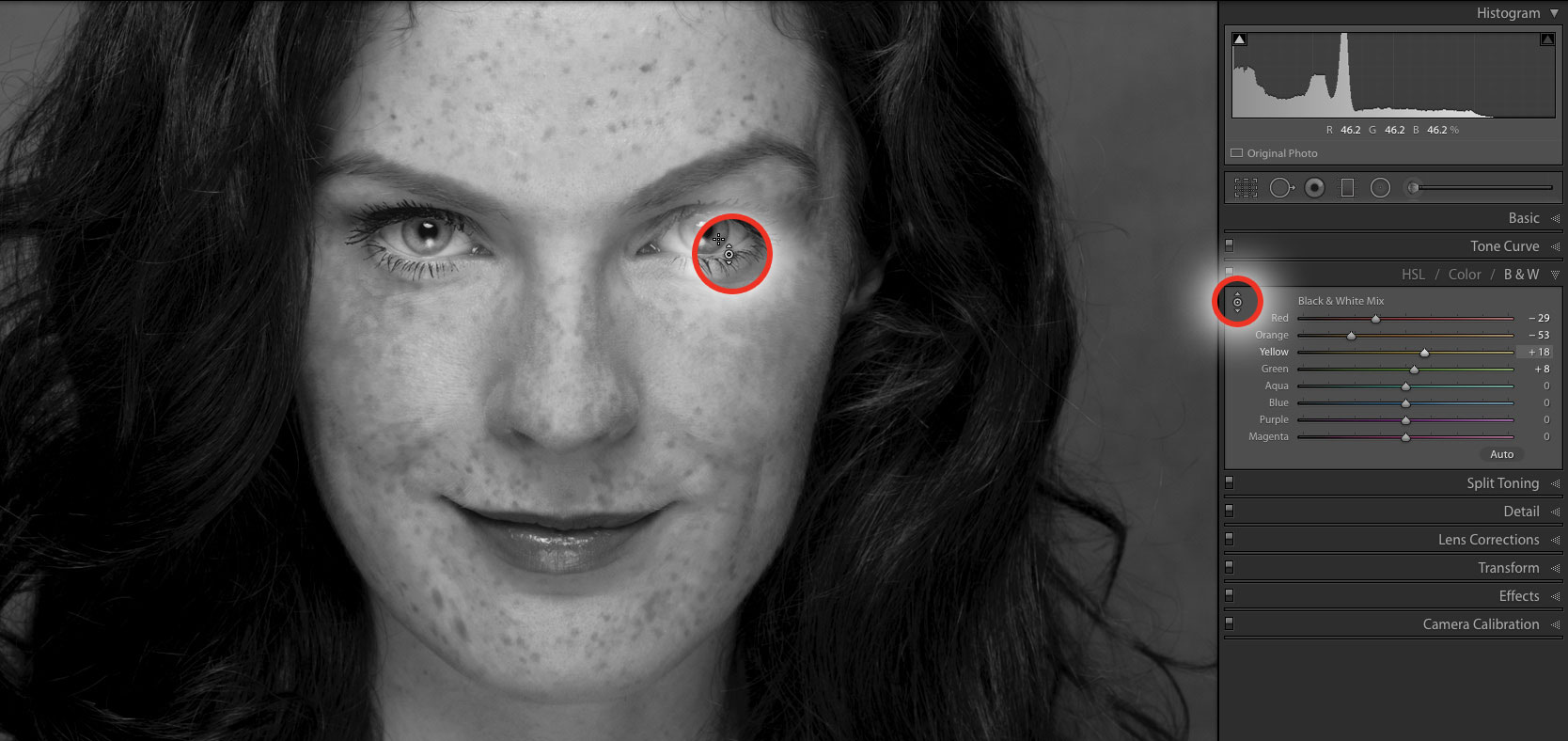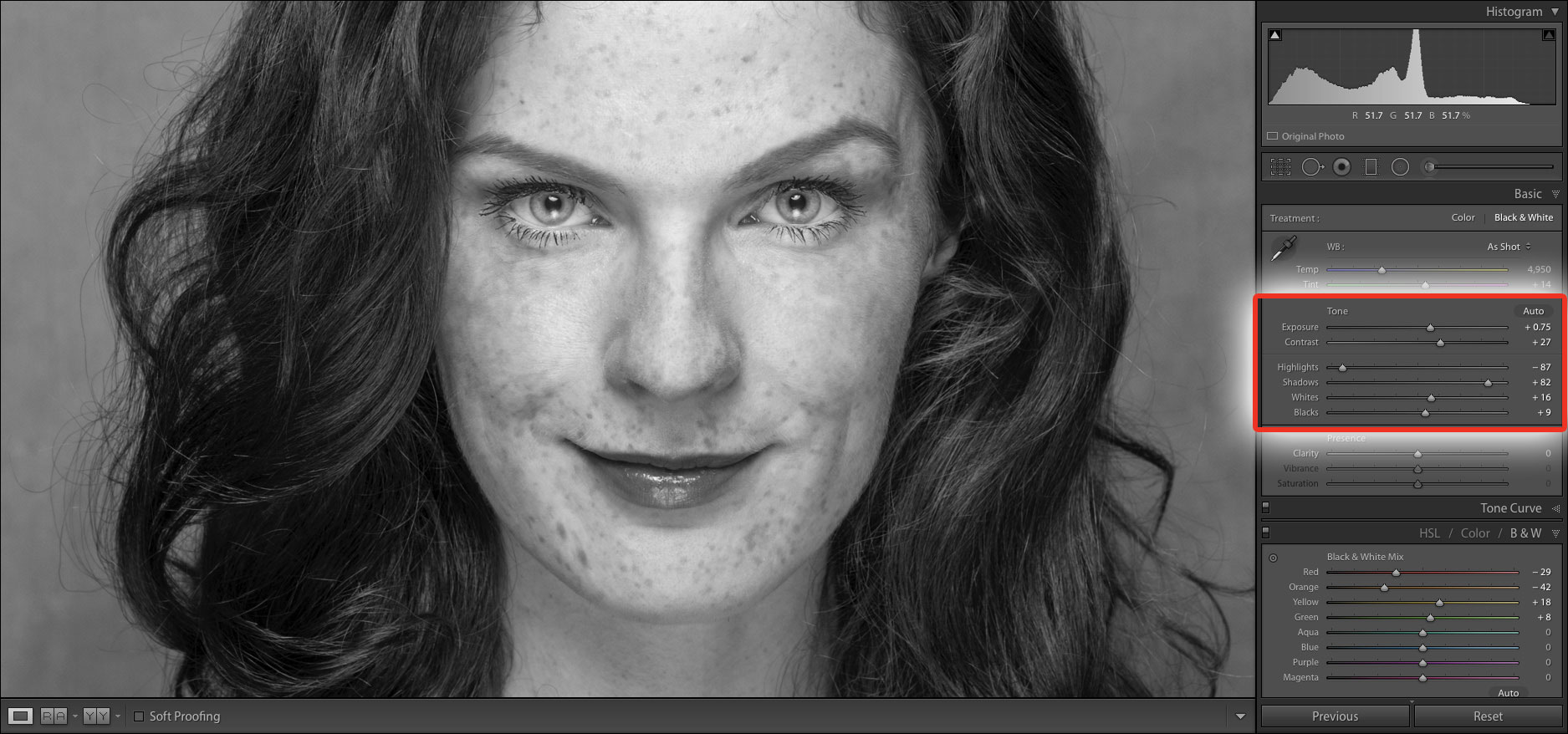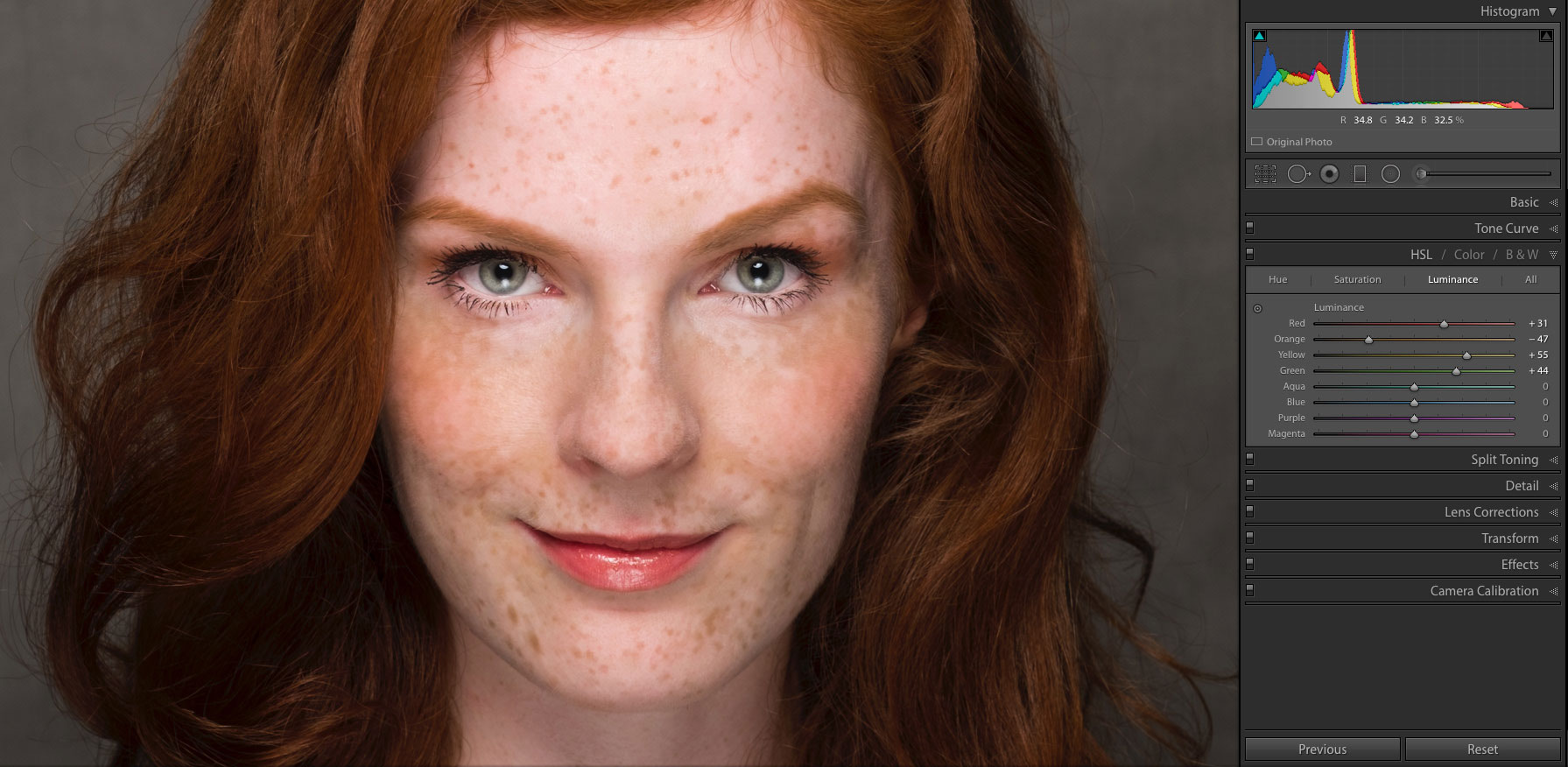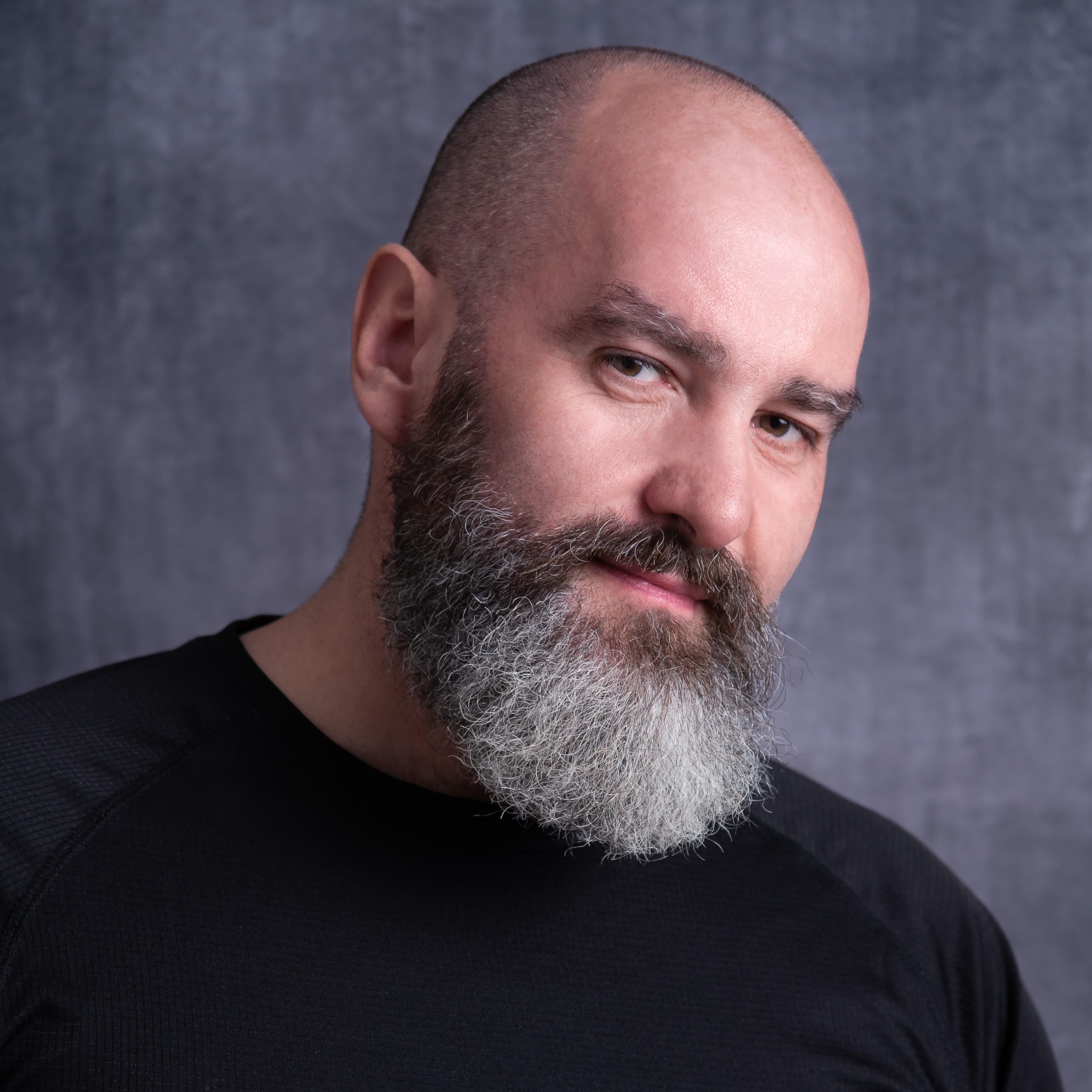Lightroom series part 22: How to boost a model's freckles in Lightroom
Add character to your subjects by bringing out their freckles, using techniques that work in both black and white and color
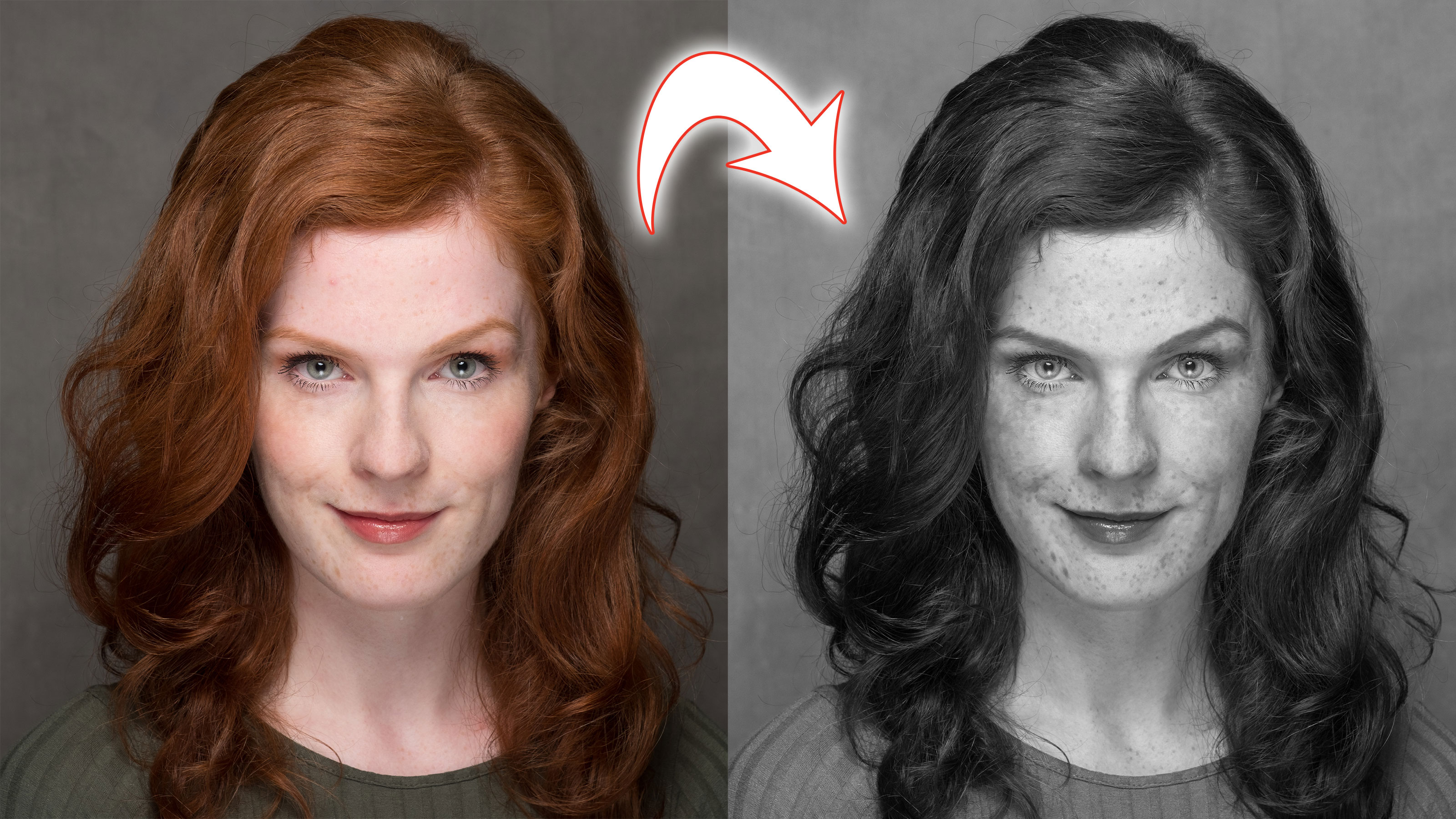
Freckles: love them or loathe them, they’re a defining feature of many faces, especially redheads. Often they get hidden under layers of make-up – but set them free!
Welcome to the 22nd instalment of our Lightroom series, first published in Digital Camera magazine (see below for subscription offers).
If you are already a Lightroom user, you could discover some new tricks and processes you haven't tried yet. If you don't use Lightroom, then scroll down to the bottom where you'll discover how to get it and which Adobe Photography Plan is best.
With the sun out, there are plenty of people bursting forth with these beautiful spots of pigmentation in the skin. You can probably tell I love freckles as a part of a person's unique character. With a little bit of processing in Lightroom, you can really make your subject’s freckles stand out even more, especially in black and white. Reversing the main technique will allow you to reduce them, but really we’re here to make them pop!
• See more Lightroom tutorials
1. First a clean up
The first step is to do some cleaning up. Press Q for the Spot Removal Tool, which allows you to click on blemishes like spots to remove them. I'm doing this because the tools to enhance freckles can also enhance spots.
2. Convert to mono
Next, make a black-and-white conversion. You can make a black-and-white image by reducing the Saturation to -100; you need the B&W sliders for this, so press the V key or click B&W in the HSL/Color/B&W panel.
The best camera deals, reviews, product advice, and unmissable photography news, direct to your inbox!
3. Adjust the tones
You can make changes to the way colors are converted to shades of grey using the eight sliders available in the B&W panel. Looking at our photo, the freckles are brown, which is a mix of red and orange, so I start with the Orange slider and move it to the left to darken them.
4. Further tweaks
Next, I move the Red slider which will darken other freckles. It’ll also darken the lips, so aim for a balance between good freckles and a pleasing lip tone.
5. Adjust the eyes
I click on the little target icon, then click on the eyes and drag up. The Yellow slider moves up. While it will affect the skin only slightly, it really makes the eyes pop.
6. Finishing touches
To complete the image, I bring up Blacks and Shadows in Basic to fix the dark hair. I use Exposure and Whites for the brightness, taking care not to blow out the skin tone. The I use Highlights to bring the skin tone back and apply some Contrast to taste. If the freckles are too strong, you can push the Orange slider back to the right.
Expert tip: Freckles in color
Can you do something similar in colour? Yes, of course you can! The difference is you use just the HSL part of the panel. If the whole panel opens, you’ll see 24 sliders. Don’t worry, you only need eight. Click on Luminance to gain control of just the brightness values of the photo. Think of Luminance as the colour equivalent of B&W. The critical slider to adjust in our example photo is Orange. While Red does play a part, darkening it can increase the redness in the skin – never a good idea. Turn down Orange. To improve skin, turn up Red. Again for the eyes, play with Yellow and Green. Green affects the shirt here, but it looks fine. Voilà: more freckles in colour.
About Digital Camera magazine
This tutorial originally appeared in Digital Camera Magazine, the monthly newsstand magazine for all photographers. Why not subscribe to a print edition, and have the magazine delivered direct to your door every month?
Alternatively, we have a number of different digital options available, including:
• Apple app (for iPad or iPhone)
• Zinio app (multi-platform app for desktop or smartphone)
• PocketMags (multi-platform app ideal for Android devices)
• Readly (all-you-can-eat digital magazine subscription service)
If you wanted a printed version of any of our most recent issues we have a selection of back issues to choose from in our online store.
How to get Adobe Lightroom
Adobe Lightroom is available in two versions: the regular Adobe Lightroom Classic CC designed for desktop users, which is what we cover in this series, and a new cloud-based Adobe Lightroom CC, which stores your files online and offers a similar but reduced set of features. For regular desktop users we recommend Adobe Lightroom Classic CC.
Adobe offers three subscription based Photography Plans which you can click on below. We recommend either the regular Photography Plan, or the Photography Plan (1TB) which costs more but comes with 1TB online storage in case you decide to go with Lightroom CC.
For this set of tutorials and for anyone who likes to work on a single main computer, we recommend the regular Creative Cloud Photography Plan. This is the cheapest way to get started AND it comes with Photoshop CC too.
Read more:
• This is the best photo-editing software today
• These are the best laptops for photographers right now
• We help you choose the best desktop computers for photo editing
Sean McCormack is a commercial, and editorial photographer, book author, and regular contributor to Digital Camera magazine based in Galway, Ireland. He has extensive experience with Lightroom, dating back to its original beta version, and has tried out just about every plugin and preset available. His latest book is Essential Development 3: 25 Tips for Lightroom Classic’s Develop Module.
